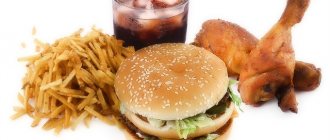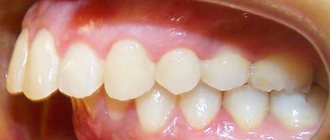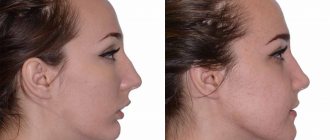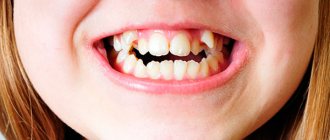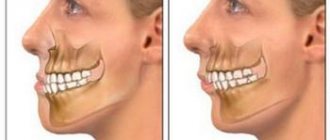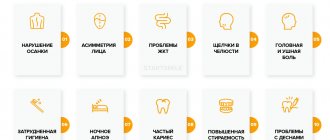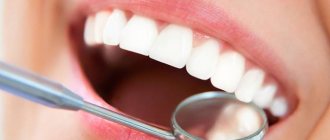Full health of a dog means the good condition of all its organs and systems, including teeth. Unfortunately, these friendly animals, which have served man faithfully for a long time, have not been spared many “human” diseases. One of them is an incorrect bite in a dog.
For breeding puppies or service breed dogs, this disease becomes a death sentence, excluding the right to serve or breed. In addition, this deficiency greatly affects the dog’s overall health.
What is dog bite
Bite is a feature of the contact of the surfaces of the teeth to each other with a tight closure of the upper and lower jaws. It is formed after the change of milk teeth and affects the speed of grinding of molars. In the absence of violations, the dentition retains its integrity even in old age.
The total number of teeth on the lower jaw of four-legged pets is 22, and on the upper jaw - 20. They include:
- 12 incisors designed for biting food;
- 4 fangs used to capture prey;
- 16 premolars involved in tearing and crushing food;
- 10 molars used for grinding food.
The display of teeth is compulsory for passing examinations in most canine training courses. It is recommended to practice it while still a puppy, as with its help you can promptly detect problems with the jaws. If the closure is incorrect, the bite in dogs is equated to pathology. For most breeds the norm is the same, but there are exceptions.
Owner actions
A responsible owner must understand that a corrected bite in a pet does not mean that no matter how good its exterior is, this representative can participate in breeding. A female or male will definitely pass this defect on to her offspring.
After getting braces, your dog needs to be treated daily so that food does not accumulate under the steel mechanism, irritating the gums. The mandatory cleaning ritual takes little time, the animal quickly gets used to it and the teeth remain healthy.
.
a special collar on him.
. The collar is not removed until the dog stops paying attention to the braces.
Features of closure of the dentition in different breeds
Malocclusion in dogs and a tongue protruding from a closed mouth are disqualifying signs. A purebred animal with such defects receives no higher than pet class during exterior assessment.
There are 4 possible varieties in total. The norm is determined based on the structural features of the jaws and the location of the teeth, since their length and development differ depending on the breed of the quadruped.
Scissor-shaped
It is the norm for most breeds: terriers, Chinese crested, German and Caucasian shepherds, pinschers. In the dog with a scissor bite in the photo, the lower incisors are slightly covered by the upper incisors. The closed jaws do not touch, and a gap of 3 mm is formed between them. This relationship is called a “lock”.
This species is the most correct from the point of view of the physiology of a predator. It makes it easier to capture and hold prey, and also reduces the likelihood of developing oral diseases.
Straight
This type involves closing the jaws in a straight line. Due to this unnatural arrangement, the incisors quickly wear down, and food is chewed less efficiently. Despite the rapid wear of the front teeth, the canines, premolars and molars do not suffer from improper closure.
In most dogs, a straight bite is considered an incorrect bite. Exceptions include brachycephalic breeds: pugs, bulldogs, boxers. The thing is that this type is not independent. A straight or pincer bite is a type of undershot bite.
Underbite
Unlike overbite, underbite in dogs is always a pathology. Its alternative name is subnodularity. With this structure, a gap of over 3 mm is formed between the closed jaws. The lower incisors do not fit closely to the upper ones, and the canines are too close to each other.
The main danger of underbite is increased wear of the entire dentition and a predisposition to tartar. Because of this, teeth become loose and fall out before old age.
Snack
An underbite, or bulldog bite, is allowed in brachycephalic dogs. In appearance it is the opposite of an underbite. When overbiting, it is not the upper jaw that moves forward, but the lower jaw. In flat-faced pets, this anomaly is explained by the structure of the skull.
The disadvantage of underbiting is the tendency to early loss of teeth due to their uneven wear. Despite this, with a small snack, the health of the dentition and gums quite often remains until old age.
Snack
Underbiting in dogs can occur if the pet has short jaws. In some breeds, such a structure is considered normal and is not considered a defect. These varieties include bulldogs, Pekingese and bull terriers - these are dogs with a forward jaw.
When overbiting, the lower incisors are in front of the upper ones, while the lower jaw is slightly pushed forward. Some teeth may even become exposed.
Attention! Basically, this arrangement is also defective. However, for Cane Corso dogs, for example, a hearty snack is considered normal.
What is childhood underbite in a puppy?
Correct jaw closure is formed by 1.5 months, when babies undergo activation. It is necessary to assess the condition of newborns and ends with the issuance of metrics.
At this age, puppies may have childhood underbite. The defect is characterized by a slight deviation of the lower jaw relative to the upper jaw. Most often, it corrects itself when baby teeth are replaced with molars.
Malocclusion in a puppy at such an early age is not a pathology. In fact, the gap between the jaws is not due to underbite at all, but to small baby teeth. When replaced with radical ones, they increase in size, closing in the required ratio without additional interventions.
How to prevent the development of defects
To prevent the development of defects in the animal, it is recommended to try to exclude all possible causes. Prevention is a correct and balanced diet, including all the necessary elements.
With a small puppy, you need to play tug games very carefully so as not to disturb the position of the teeth, otherwise you end up with a dog with a protruded jaw, which is very difficult to correct.
It is recommended to carefully examine the dog’s oral cavity from childhood, especially during the period of change in the primary bite. If problems arise, you need to consult a specialist - remove the baby tooth or correct the bite with the help of special devices (at a young age this is much easier to do).
Malocclusion in dogs and puppies
In addition to the types of malocclusion listed above, there are others in dogs. All these deviations combine possible consequences, as well as the reasons for their occurrence.
Why is it dangerous?
It’s not for nothing that the scissor-shaped appearance is called the anatomical norm. The presence of malocclusion in puppies and adult animals is dangerous due to the following complications:
- chronic gastrointestinal diseases that develop due to poor quality of chewing food and insufficient wetting with saliva;
- dental pathologies arising from frequent injuries to the gums, tongue, palate and teeth themselves;
- dermatitis and weeping eczema, caused by profuse and constant drooling due to loose jaw closure.
It is also worth noting that the defect is inherited. For this reason, animals with an abnormal dentition structure are necessarily rejected from breeding.
Reasons for deviations
Malocclusion in a puppy can be congenital or acquired. In the first case, the defect cannot be corrected or prevented, but in the second, it all depends on the owner.
The main reasons for deviations include:
- Genetic predisposition. The defect is inherited, but practically does not occur in yard dogs. This is due to the fact that in addition to genetics, breed is important.
- Jaw injuries. Most often, puppies receive them, since adult animals are more careful. Children are injured when chewing bones and during active games of tug. In adulthood, injuries to the jaw occur due to blows from blunt objects.
- Incorrect or poor feeding. Calcium plays an important role in jaw formation, so a lack of it in the diet can be fatal. The same applies to vitamin D. Its deficiency causes rickets, accompanied by softening of the bones. This affects not only the skeleton, but also the teeth.
- Problematic replacement of baby teeth. Early eruption of molars when baby teeth have not fallen out leads to their deformation. This phenomenon is called persistence. In addition to displacement of the dentition, persistence increases the likelihood of injury to the mucous membranes.
The risk group includes representatives of small breeds, which more often than others suffer from persistence. To maintain proper jaw closure, their owners have to contact a veterinarian for surgical removal of excess teeth.
Types of malocclusion in dogs
Malocclusions in dogs include underbite, overbite and overbite. The difference between them is that the latter is recognized as a disqualifying characteristic without exception. In the remaining 2 cases, everything is less strict, and the snack itself is even prescribed in the standard for brachycephalics.
In addition to underbite, other types not listed above are also recognized as a defect:
- Asymmetrical, or crooked. The main reason is persistence. It manifests itself in faster growth of one side of the jaw and often causes damage to the upper palate due to displacement of the canine teeth.
- Front cross. Assumes correct closure of canines, premolars and molars. The problem lies in the lower incisors. Depending on the severity of the defect, one or more of them are located directly in front of the upper ones. Most often develops after games of tug.
- Rear cross. In this case, the overlap occurs due to the fault of the maxillary premolars and molars, which overlap the lower ones. Rarely seen. It is mainly diagnosed in collies and Dobermans.
- Open. Represents the absence of closure. It differs from straight teeth in that the teeth do not touch each other even after the mouth is closed. A free space forms between them, into which the tongue often falls out.
- Retroposition (palatal adherence). The canines on the lower jaw move towards the center. They injure the upper palate and maxillary canines. The risk group includes Yorkshire terriers.
With timely treatment, all of the above violations can be corrected. The difficulty of returning teeth to their normal position increases with age.
Does the defect need to be fixed?
Minor deviations from the norm are quite acceptable. If they do not affect the quality of life, then you can do without correction. The only caveat is the need for constant monitoring by a veterinarian to avoid worsening the current condition.
It is important to note that even a scissor bite does not guarantee that dogs will not wear down their teeth. In addition to the listed defects, abrasion is also provoked by other reasons, so after 4-8 years the normal position of the jaws often changes to a pincer-like one.
Most often, such animals are simply excluded from breeding and are not allowed to exhibit, but if desired, you can try to correct the problem together with a veterinarian orthodontist. It is better to consult a veterinary clinic about the advisability of using special devices for teeth.
Correction of the defect is not possible in all cases. If standard treatment methods do not work, then they resort to installing prostheses. The procedure is similar to installing crowns in humans. The only difference is that four-legged pets have metal teeth inserted rather than ceramic ones.
Prevention
Malocclusion is not always a congenital genetic feature. In most cases, simple preventive measures will help avoid this defect. We will talk about these measures further.
First of all, you need to pay attention to the proper nutrition of your pet. It is important to ensure that his diet contains enough calcium, vitamin D3 and other important microelements. Dry food must be selected strictly according to the age category of the animal. If you feed your puppy natural food, take care of additional vitamin and mineral supplements.
Bring your dog to the veterinarian regularly. This issue should be given particular importance when baby teeth are replaced by molars. During this period, the bite is often disturbed due to captive baby teeth: therefore, if necessary, the latter are removed. Sometimes the dog's chewing of hard toys and objects can help the rapid loss of baby teeth.
If your puppy has started to develop an incorrect bite, a rubber ring installed by a veterinarian will help correct the situation at an early stage. It is only important not to let the situation take its course, and take measures to correct the problem as early as possible.
Attention : all preventive measures should be taken when the dog is still a puppy: the earlier, the better.
So, we have learned what a correct bite in dogs is, and how such a defect can be eliminated. As you can see, the incorrect position of the teeth has a negative impact not only on the dog’s appearance, but is also harmful to its health. Pay attention to the position of your pet’s teeth, and be sure to contact a competent veterinarian in a timely manner if there is a need to correct the bite.
Currently reading:
- Thyroid dysfunction in dogs (hypothyroidism)
- Seven Signs and Remedies for Getting Rid of Fleas in Dogs
- How to recognize signs of dog poisoning from rat poisons
- Features of the character and upbringing of the Australian Shepherd
Ways to correct the situation
Malocclusion in dogs is treated by a veterinarian orthodontist. The most optimal age for correction is 5-12 months. At a later age, the jaws are fully formed, which significantly complicates their displacement in the desired direction.
Treatment methods for four-legged pets differ little from those for humans. For correction, special designs are used, divided into removable and non-removable.
Mouth guards
Mouthguards are transparent acrylic products. When worn, they put pressure on the teeth, changing the dog's bite in the desired direction. To achieve the desired effect, it is necessary to use the structure on an ongoing basis - with the exception of eating and cleaning the mouth.
Mouthguards are replaced every 2-3 months or more often, based on the rate of dentition displacement. Their only drawback is their high price. For this reason, some owners use a cheaper analogue - a rubber ring. Despite the similar principle of action, the rubber product applies too soft pressure and only helps puppies.
Braces
Braces are also used to achieve a scissor bite in dogs. Unlike aligners, they are not removed throughout the entire treatment.
Dog braces are made of steel or its alloy with nickel. They consist of pins connected to each other by metal wire.
The size of the product is selected individually for each pet. Ready-made braces are attached to the teeth with dental glue, adjusting the force of their pressure by tightening or loosening the wire.
Despite the possibility of free absorption of food, non-removable devices have some contraindications. Their installation is prohibited when:
- allergies to steel, nickel or glue;
- caries, stomatitis, gingivitis, periodontitis and other dental diseases;
- tumors and other neoplasms in the oral cavity.
When wearing braces, pay special attention to brushing your teeth. Due to the impossibility of removal, pieces of food quickly get stuck in the structure, attracting pathogenic microorganisms. For this reason, the frequency and duration of routine cleaning are increased.
Also, during treatment, it is recommended to avoid chewing bones and other hard objects that can lead to breakage of pins and wires.
Elimination methods
No matter the age of the animal, you cannot solve the problem yourself. The anomaly can be corrected before the animal reaches 5-12 months of age.
Important! Only a veterinarian will correctly decide how to correct the defect and determine the treatment method. The owner’s task is to strictly follow the specialist’s instructions.
For puppies, this may include increased nutrition with the inclusion of various vitamin supplements. There may be special massages and exercises to develop certain muscles and bones.
Dogs get braces. They come in 2 types. Removable – silicone. Installed on the incisors for constant, uniform pressure on the teeth. They are tightened as necessary.
Fixed - a system of pins or plates. As the teeth grow, it is tightened. For adults - surgery. In any case, the doctor decides what and how to do.
Before you decide to have your pet's teeth adjusted, you should decide how necessary it is.
Mouthguards made of transparent material
A removable product that not so long ago was used only to solve bite problems in people. The mouthguard can be removed while feeding your pet, brushing its teeth and other hygiene procedures.
To take an accurate impression, the specialist only needs to use anesthesia once. The design is easy to use and operate: it fits tightly to the teeth and “presses” on the desired areas.
After 8-12 weeks, the product is replaced with a new one, which is several millimeters larger, which ensures a shift in the dentition. Over time, the teeth end up in the right place. This process is constantly monitored; for this purpose, the doctor periodically makes intermediate impressions.
The dog must wear a mouthguard almost all the time, except for those moments when it needs to be removed. The structure requires regular maintenance - cleaning, rinsing under running water, etc.
Due to the high price and labor intensity, this method of correcting the bite is not very popular.
